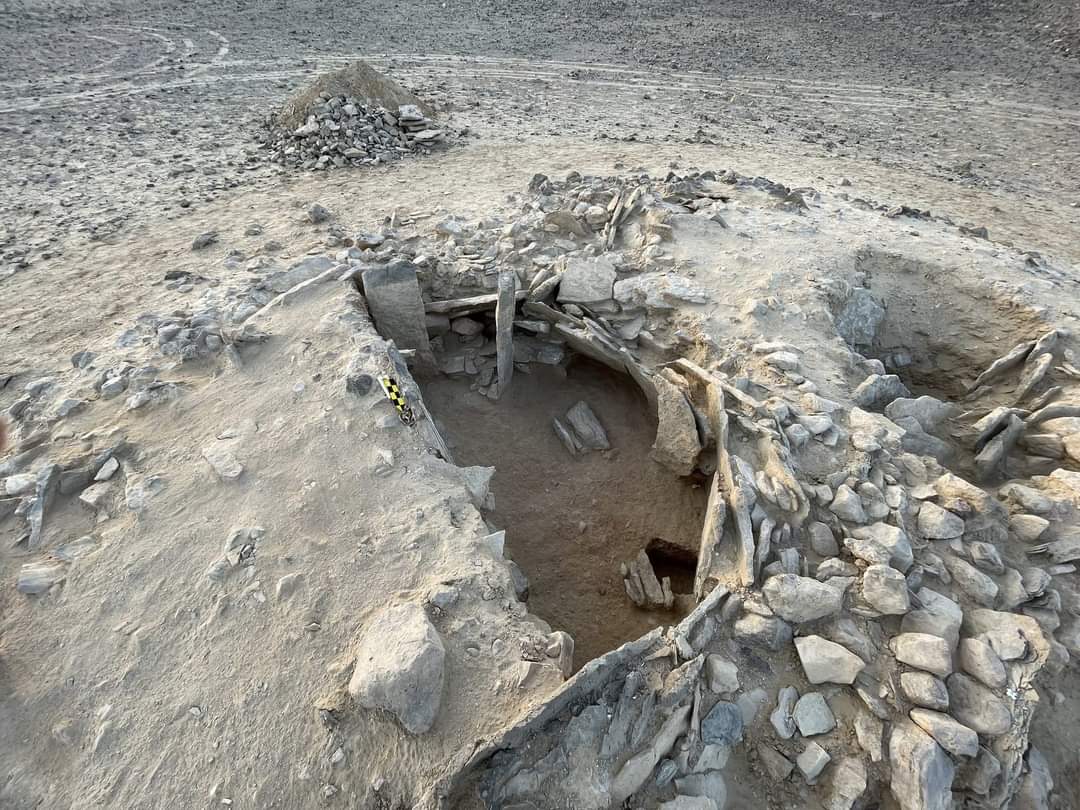
Archaeologists from the Czech Academy of Sciences (CAS) have made a fascinating discovery in Oman’s deserts. They have found ancient structures that resemble England’s Stonehenge. These structures, called triliths (from Greek ‘having three stones’), were built around 2,000 years ago in the Dhofar province of southern Oman.
The CAS’ Institute of Archaeology led international teams that found these archaeological features from different periods of human occupation in Oman’s deserts.
The people who built the triliths and the purpose behind their construction are still uncertain. Along with these structures, the archaeologists also found stone hand axes. These axes date back to a time between 300,000 and 1.3 million years ago. This period coincides with the first migration of humans from Africa.
The evolutionary anthropologist Viktor Černý said, “The detected interactions of African and Arab archaeological cultures characterize the mobility of populations of anatomically modern humans. It will be interesting to confront these findings also with the genetic diversity of the two regions and create a more comprehensive view of the formation of contemporary society in Southern Arabia.”
Findings At the Duqm Province
In the Duqm province of central Oman, another team of researchers discovered a Neolithic tomb at the Nafün site. This tomb dates back to the period between 5000 and 4600 B.C.
The tomb contained two burial chambers beneath a megalithic structure. Archaeologist Alžběta Danielisová mentioned that the remains of at least several dozen people were found in the chambers.
Close to the tomb, the team recorded rock engravings linked with human settlements that range from 5000 B.C. to A.D. 1000.
Findings At the Dahwa Site
At the Dahwa site, archaeologists discovered a group of buildings from the Umm al-Nar culture. These buildings date back to the mid-3rd millennium B.C.
Among the ruins was a tomb containing a variety of silver jewelry. One of the rings in the collection had an image of an Indian bison stamped on it. This image was a common theme in the art of the Indus Valley or Harappan civilization.
Czech archaeologists discovers “Mini-Stonehenge” in Oman
Mysterious ritual sites, ancient burial tombs, and rock carvings in an unknown script. These are some of the exciting discoveries made by an international expedition in Oman led by Czech archaeologists, @OmanMHT #oman pic.twitter.com/Q25smWKDpd
— Arabian Daily (@arabiandailys) April 25, 2023
The analysis of the ring revealed that it was most likely crafted in Mesopotamia using silver that originated in Anatolia. This finding highlights the extensive trade networks established by Bronze Age merchants in the region.
Roman Garba, the expedition leader and coordinator from the Institute of Archaeology of the CAS in Prague said, “Our findings, supported by four different dating methods, will provide valuable data for reconstructing the climate and history of the world’s largest sand desert. Natural conditions also shaped prehistoric settlements, and what we are trying to do is study human adaptability to climate change.”
See all the latest news from Greece and the world at Greekreporter.com. Contact our newsroom to report an update or send your story, photos and videos. Follow GR on Google News and subscribe here to our daily email!



